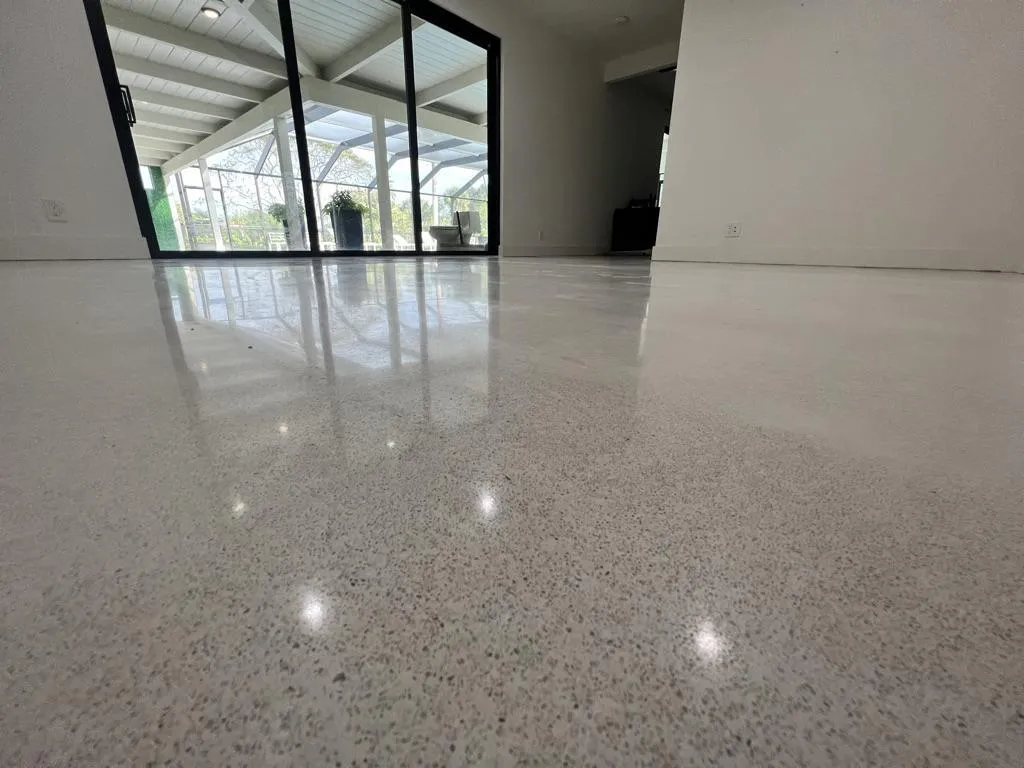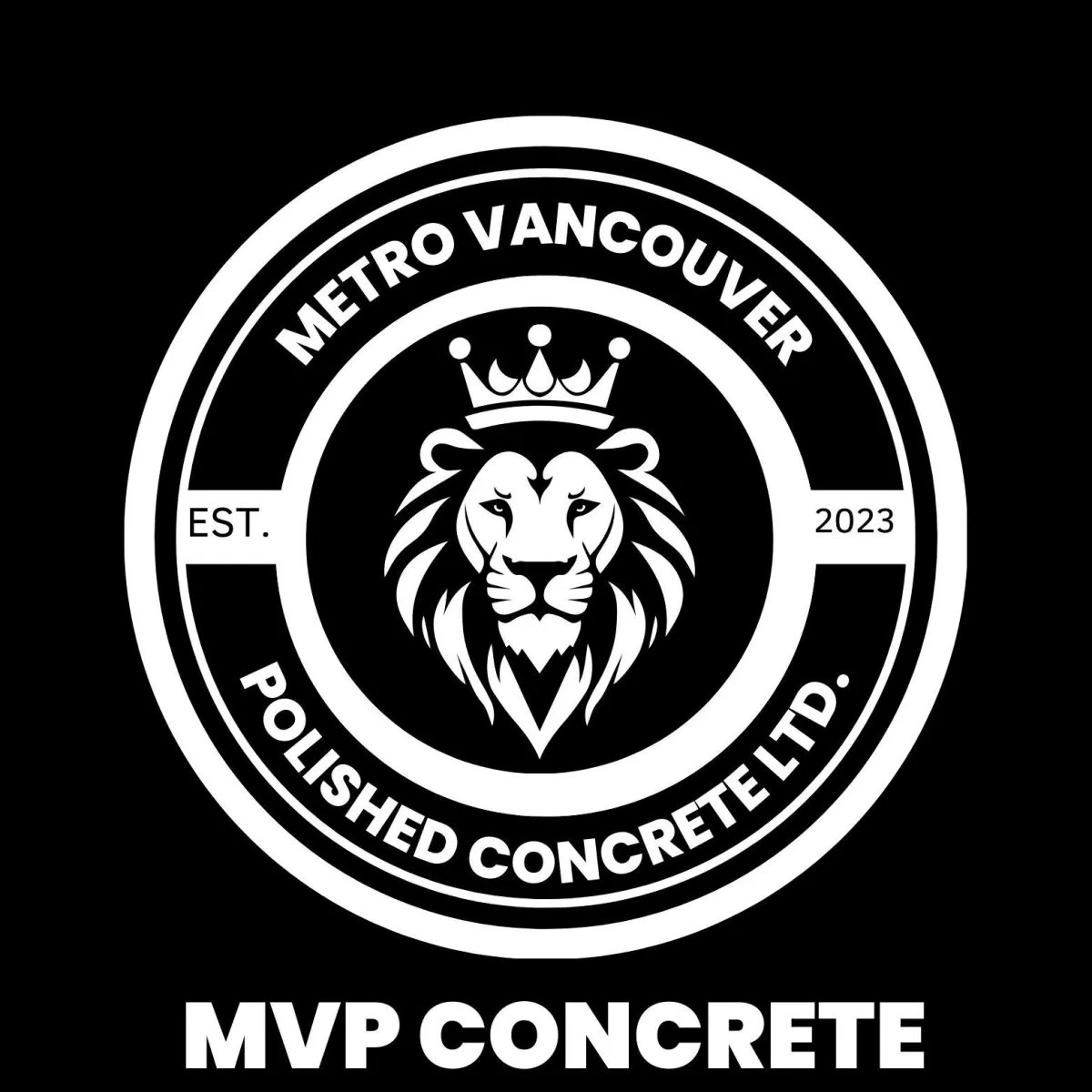
Why Vancouver Architects Choose Polished Concrete for LEED Projects | MVP Concrete
Vancouver has built a global reputation as a leader in sustainable design. With new developments pushing for higher environmental standards, LEED (Leadership in Energy and Environmental Design) certification has become a key benchmark for both commercial and residential projects. Architects, developers, and property managers are under increasing pressure to meet these standards while still delivering spaces that are beautiful, functional, and cost-effective.
One of the most effective ways to balance sustainability with performance is polished concrete flooring. Once seen as purely industrial, polished concrete has become the go-to choice for LEED-certified buildings across Vancouver. Its appeal goes beyond aesthetics—polished concrete leverages the existing slab, eliminates unnecessary materials, and provides a long-lasting surface that supports both environmental and operational goals.
At MVP Concrete, we’ve seen firsthand why more architects and designers are specifying polished concrete for projects aiming for LEED recognition. It’s sleek, low-maintenance, and remarkably durable—but more importantly, it aligns with the very categories that LEED measures. In this article, we’ll break down exactly why polished concrete is becoming the flooring of choice in Vancouver’s green building movement, how it contributes to LEED points, and why MVP Concrete is the trusted partner for delivering these systems.
What is LEED Certification?
LEED—short for Leadership in Energy and Environmental Design—is the world’s most recognized framework for green building. It provides a point-based rating system that evaluates a building’s environmental performance across multiple categories, from energy efficiency to materials used. In Vancouver, where sustainability is woven into both city policy and market demand, LEED certification is often a deciding factor for developers, tenants, and investors alike.
Buildings can earn different levels of certification—Certified, Silver, Gold, or Platinum—depending on how many credits they achieve. Flooring systems play a bigger role in this process than many realize. Choices around materials, adhesives, and finishes can directly impact categories like Indoor Environmental Quality, Materials & Resources, and even Energy & Atmosphere.
This is where polished concrete has a major advantage. Unlike traditional floor coverings that require adhesives, sealants, or petroleum-based materials, polished concrete makes use of the slab that’s already there. That means fewer materials introduced to the jobsite, less waste sent to landfills, and a healthier indoor environment. For architects and designers in Vancouver, specifying polished concrete is one of the most straightforward ways to support LEED goals while still delivering a modern, high-performance space.
Why Polished Concrete Fits LEED Standards
LEED certification isn’t about using one or two “green” products—it’s about how the entire building system performs over time. Polished concrete aligns with multiple LEED categories, which is why it has become such a strong flooring choice for Vancouver projects targeting certification.
Indoor Environmental Quality
Polished concrete contributes to cleaner, healthier indoor air. Unlike carpet, vinyl, or adhesives that can off-gas volatile organic compounds (VOCs), polished concrete requires no added chemicals to function. It doesn’t trap dust, allergens, or mold, making it an excellent option for schools, hospitals, offices, and residential spaces focused on wellness.
Energy & Atmosphere
The reflective surface of polished concrete enhances natural daylighting and reduces the amount of artificial lighting needed. In commercial buildings, this can translate into measurable energy savings—supporting LEED credits for energy performance while creating brighter, more inviting interiors.
Materials & Resources
Because polished concrete uses the existing structural slab, it eliminates the need for additional flooring materials. No vinyl sheets, no carpet rolls, no tiles that will eventually end up in landfills. This extends the life of the original concrete and reduces waste, which supports LEED goals for sustainable material use.
Water Efficiency / Green Cleaning
Polished concrete is easy to clean with nothing more than water or neutral cleaners. No harsh chemicals or frequent waxing is needed, reducing both maintenance costs and environmental impact.
In short, polished concrete doesn’t just tick one box—it touches several LEED categories at once. That makes it a practical, high-impact choice for architects and builders in Vancouver who need materials that work with, not against, sustainability targets.
Comparing Polished Concrete to Other Flooring Options
When selecting flooring for a LEED project, it’s important to weigh not just aesthetics, but also performance, lifespan, and environmental footprint. Here’s how polished concrete stacks up against other common choices in Vancouver:
Tile: While durable, tile requires grout and adhesives, both of which may emit VOCs and degrade over time. Grout lines also trap dirt, which can make cleaning more resource-intensive.
Vinyl/LVT: Vinyl is a petroleum-based product, making it less sustainable. It often contains chemicals that impact indoor air quality, and it typically needs replacing every 10–15 years.
Carpet: Carpet contributes to sound dampening, but it traps dust and allergens, requires chemical cleaning, and has one of the shortest lifespans of all flooring. Frequent replacement adds to landfill waste.
Epoxy & Coatings: Epoxy floors are strong but rely on chemical resins that can emit VOCs during installation. Over time, coatings may peel or chip, leading to costly repairs or reapplications—something LEED evaluators take into account.
By contrast, polished concrete uses the structural slab already in place. It avoids adhesives, coatings, and unnecessary materials while delivering decades of performance with minimal upkeep. For projects chasing LEED points in Vancouver, polished concrete often proves to be the most sustainable and cost-effective flooring choice.
Case Examples in Vancouver
Across Vancouver, polished concrete has moved well beyond warehouses and industrial facilities. Today, it’s a fixture in projects pursuing LEED certification across multiple sectors—office towers, universities, retail spaces, and residential developments.
In the commercial sector, polished concrete is becoming the standard for office buildings aiming for LEED Silver or Gold status. Its low maintenance requirements and contribution to indoor air quality make it attractive to property managers and tenants alike. Retail environments are also adopting polished concrete, with boutiques and showrooms in Vancouver choosing it for its durability and sleek, modern aesthetic that doesn’t compromise environmental goals.
Educational and civic projects provide another strong example. Schools, libraries, and municipal buildings have embraced polished concrete as a low-maintenance solution that supports healthier indoor environments for staff and students while helping meet LEED certification targets.
Even in multi-family residential developments, polished concrete is emerging as a preferred option for lobbies, amenity spaces, and even individual units. Developers appreciate that it aligns with sustainability benchmarks while delivering a finish that appeals to design-conscious buyers and renters.
While every project is unique, the common thread is clear: polished concrete consistently delivers measurable benefits that align with LEED certification requirements—without sacrificing aesthetics or performance.
How MVP Concrete Delivers LEED-Friendly Polished Concrete
Not all polished concrete is created equal. Achieving LEED-friendly results requires more than just grinding and sealing a slab—it requires a process rooted in precision, expertise, and sustainability. That’s where MVP Concrete stands out.
As a locally based team, MVP Concrete understands both Vancouver’s construction standards and the sustainability requirements tied to LEED certification. We work directly with architects, designers, and builders to specify the right approach for each project, ensuring that every floor not only looks great but also contributes to long-term environmental goals.
Our process begins with professional surface preparation, where we use industrial-grade grinders and OSHA-compliant dust collection systems to ensure a clean, level slab. From there, we densify and refine the concrete using multi-step polishing techniques that create a finish designed to last for decades. For high-traffic zones, we integrate guard finishes that provide additional stain resistance without adding VOCs or surface coatings.
The result is a polished concrete system that strengthens the existing slab, minimizes waste, and reduces ongoing maintenance—exactly the kind of performance LEED projects demand. By combining craftsmanship with sustainability, MVP Concrete has become a trusted partner for Vancouver’s green building movement.
FAQs: Polished Concrete & LEED
Does polished concrete automatically earn LEED points?
Not directly. Polished concrete contributes to multiple LEED categories—like indoor air quality, energy efficiency, and materials reuse—but points are awarded based on overall project compliance, not a single material.
Is polished concrete safe for schools and healthcare facilities?
Yes. Because it contains no VOCs, doesn’t trap dust, and can be cleaned with simple methods, polished concrete is an excellent choice for schools, hospitals, and wellness-focused spaces.
How does polished concrete perform in Vancouver’s climate?
Polished concrete is well-suited to Vancouver’s mix of rainy winters and humid summers. With the right prep and densification, floors remain resistant to moisture, wear, and seasonal traffic.
Can old slabs be polished for LEED certification projects?
In many cases, yes. If the slab is structurally sound, it can be restored and polished to LEED standards. For damaged or contaminated floors, polishable overlays provide a fresh surface that still qualifies for LEED credits.
Polished concrete is more than a design choice—it’s a smart, sustainable investment that supports Vancouver’s drive toward greener, healthier buildings. By aligning with multiple LEED categories, polished concrete helps architects and developers achieve certification goals while reducing long-term costs and maintenance burdens.
From its low environmental footprint to its decades-long durability, polished concrete has become the flooring system of choice for LEED-certified projects across Vancouver. And with MVP Concrete, you’re working with a team that combines local expertise, technical precision, and a deep commitment to sustainability.
Whether you’re an architect designing a new office tower, a builder managing a LEED-driven development, or a property owner looking to upgrade responsibly, MVP Concrete delivers polished concrete systems that are built to perform—and built to last.
Ready to discuss your project?
Contact MVP Concrete today to learn how our polished concrete solutions can support your LEED-certified building in Vancouver.
